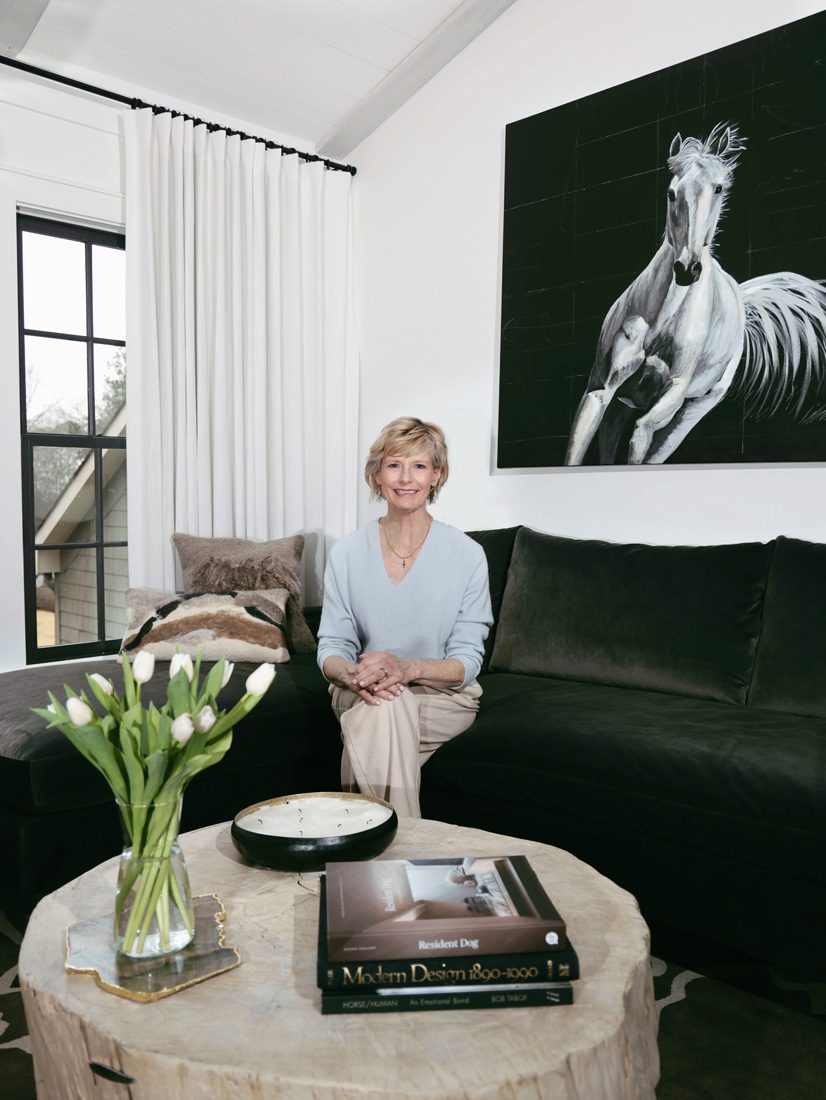Designer Libby Patrick’s holistic approach to hospitality design.
More than 20 years ago interior designer Libby Patrick left her job as a principal at a leading design firm, opting to pick up contract work from home. “I started working out of my basement and doing my own projects,” says the Buckhead resident, who has more than 30 years of experience in the design industry. “One thing led to another, and we started getting bigger and bigger projects.”
Sims Patrick Studio, where Patrick is CEO and founder, has grown into a team of 14 designers, planners and project managers specializing in large-scale hospitality and boutique luxury projects. Here, she shares the holistic approach of her firm and her philosophy on design.
The designers at Sims Patrick Studio are interior architectural designers. What does that mean?
Through the lens of storytelling, we take the client’s vision and interpret it into a three-dimensional solution. This involves the placement of walls, floors and ceilings with lighting that enhances these. We also design custom lighting and furnishings, integrating artwork to enhance the story. We start with sketches and evolve into a set of interior architectural drawings for the contractor to build, along with furniture plans, details and specifications for the procurement agent to purchase and install.
Are there any common themes that anchor your projects?
We pride ourselves on doing “one-of-a-kind” projects so each one is unique, based on the research and development of a solid design concept. We always start the process with the client’s vision. We also study the targeted market and research the attributes of the location, surrounding culture, the flora and fauna of the area and any other inspiration that will lead to an authentic experiential design solution.
What drew you to hospitality design?
I always wanted to do hotels because I felt like it was a culmination of everything I have learned in my career. Hotel design combines so many project types—restaurants, corporate, retail and luxury-lifestyle— into one project. Designing hotels is the most complicated and also the most fun. I am constantly challenged, and I love it.
What projects stand out for you?
I have a special soft spot for a boutique hotel project, McEntire, that I am developing in my hometown of Decatur, Alabama. It’s a 2-acre site overlooking the river with a circa-1835 historic home on the property. Adjacent to the home, it will have a 55-room hotel, restaurant, rooftop bar, event space and spa. I am excited about giving back to my community and honoring my parents, who have worked so hard for 50 years to help Decatur develop into such an amazing place.
What do you look for when hiring designers to join your team?
[We look for] someone who is smart, skilled, kind, positive, a good designer, willing to learn and work hard, and who is a team player.How do you see the design industry changing?
In hotel design, there is a bigger focus on local culture, sustainability, better food and beverage options, a heightened fitness and wellness experience, the bathroom experience and up-to-date and integrated technology in the public spaces and guest rooms.
SIMS PATRICK STUDIO
404.261.6043
simspatrickstudio.com
@simspatrickstudio
STORY: Claire Ruhlin
PHOTO: Sara Hanna
Simply Buckhead is an upscale lifestyle magazine focused on the best and brightest individuals, businesses and events in Buckhead, Brookhaven, Sandy Springs, Dunwoody and Chamblee. With a commitment to journalistic excellence, the magazine serves as the authority on who to know, what to do and where to go in the community, and its surroundings.













